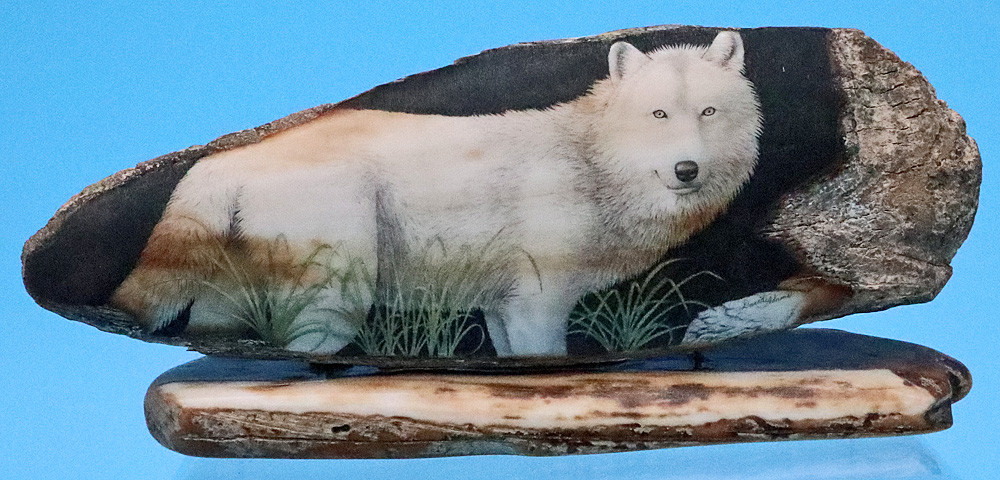Ivory and Bone have been used as an artistic medium since ancient times. Many cultures have etched and carved their histories into its rich surface, both for creative expression as well as for practical use. The Eskimo culture was one of the more prolific producers of ivory artifacts and tools, as that part of the world yields much of the ivory we find buried under it's frozen surface even today.
This practice of etching and carving ivory no doubt influenced the whalers and seamen of the 17th and 18th centuries, who developed it into the uniquely American art form known as “Scrimshaw.” Originally used as a term that meant “wasting time,” scrimshaw was used by sailors to fill up their idle time by scratching designs of ships, whaling scenes, and other nautical motif's on ivory tusks, whales' teeth and fossilized bone.
Since then, scrimshaw has changed and gone beyond the traditional limits to become an art form in its own right. Today, only ethnic “Natives” such as Eskimo or Aleut can legally carve “fresh” or new ivory. Except for such Native hunters, who utilize the entire animal in their subsistence, the use of ivories has shifted from that of living marine mammals to ancient walrus or mammoth ivory found by beachcombers and rural residents of Alaska and Siberia. Historical artifacts carved of Ivory – old sled-runners, fire-starters, and other tools -that are found are also used by today's scrimshanders.
Your scrimshaw is a unique art-work, and as such, requires some care as would a fine painting or sculpture. To preserve the beauty of the piece, keep your scrimshaw out of direct sunlight and away from excessive heat. If you live in a very dry climate, keep a small container of water near the ivory to help humidify the surrounding air. Wipe clean with a damp cloth, using no cleansers or detergents and your precious artwork should last for generations.

